If you're looking for an open-source eCommerce platform to host your online presence, osCommerce vs Magento might be two popular names that often come up. While osCommerce is known for its simplicity, Magento is widely recognized as a powerful yet complex solution.
Since both platforms offer unique advantages, it is essential to understand their differences before making a decision. Keep scrolling on our osCommerce vs Magento comparison to discover all the key areas, including:
- Cost of ownership
- Ease of use
- Performance and scalability
- eCommerce features
- Marketing and SEO functions
- Themes and customization
- Extensions and integrations
- Security
- Support
We hope that by the end of this guide, you will have a clear understanding of which platform aligns best with your business needs and future goals.
osCommerce vs Magento – Our Quick Verdict
Before diving deep into each platform’s features, performance, and cost, it’s helpful to get a quick snapshot of how osCommerce vs Magento compare at a glance. While both platforms support online selling, they cater to different types of users and business needs.
In this section, let's take a look at the key differences between Magento vs osCommerce based on the essential criteria.
Criteria | osCommerce | Magento | The verdict |
Total Cost of Ownership | Low upfront costs but rising maintenance and manual upgrades | Higher cost but better value for complex business needs | A Tie |
Ease of Use | Easier to set up and manage for beginner | Requires technical knowledge and experience | osCommerce |
Performance and Scalability | Suitable for small stores with light traffic | Scalable and built for high-performance under large loads | Magento |
eCommerce Features | Basic core features; relies on community add-ons | Rich built-in features; supports advanced selling models | Magento |
Marketing and SEO Functions | Basic SEO capabilities and few marketing tools | Advanced SEO tools and built-in marketing features | Magento |
Themes and Customization | Limited theme variety and customization options | Highly customizable with modern front-end frameworks | Magento |
Extensions and Integrations | Large extensions but is quite limited compared to Magento | Robust ecosystem with actively supported and diverse integratio | Magento |
Security | Dependent on manual updates and community patches | Strong security tools with regular patches | Magento |
Support | Community support only | Community and official Adobe support, plus agency network | Magento |
So which platform is for you? From our point of view, osCommerce is ideal for:
- Individuals or small businesses with decent technical knowledge
- Store owners looking for a simple and budget-friendly setup
- Developers who want full control and don’t mind manual maintenance.
On the other hand, we believe Magento is the better solution for:
- Mid-sized to large businesses needing scalability and performance
- Merchants looking for enterprise-level features and customization
- Teams with access to technical expertise or developer support
In the latter part of our osCommerce vs Magento comparison, let's break down all these differences in detail.
An Overview of osCommerce vs Magento
Before comparing osCommerce vs Magento in depth, it's important to understand what they are, where they came from, and how they fit into the eCommerce market. Both platforms have been part of the online retail space for many years, but they have evolved in very different ways to serve distinct user groups and business needs.
osCommerce pros and cons
osCommerce was first released in 2000, making it one of the oldest open-source eCommerce platforms still in use. It has been the home for over 187,000 websites thanks to its simplicity, free license, and active community. Over time, thousands of add-ons and customizations were created by developers around the world, allowing store owners to build out their online shops with relative ease.

While osCommerce offers a lightweight and low-cost foundation for starting an online store, it may not provide the scalability or modern features required for long-term growth. Below, let's take a look at the strength and weakness of osCommerce to understand more about the platform.
Pros | Cons |
✓ Completely free and open-source: No licensing fees. | ✕ Outdated interface: Requires extensive customization to modernize. |
✓ Highly customizable: Developers have full control over the code. | ✕ Steep learning curve: Not beginner-friendly; requires advanced technical skills. |
✓ Lightweight and fast: Minimal resource consumption when optimized properly. | ✕ Limited built-in features: Many essential eCommerce functions require add-ons. |
✓ Simple hosting requirements: Can run on most basic web hosting plans. | ✕ Smaller support community: Fewer active developers and resources compared to competitors. |
Magento pros and cons
On the other hand, Magento, launched in 2008, has quickly rose to prominence as a powerful, flexible, and enterprise-ready solution. Magento is especially popular among mid-sized and large businesses that need multi-store capabilities, strong product management, and support for international selling. That's why Magento, or now Adobe Commerce, has been trusted by over 639,000 online stores worldwide, according to BuiltWith.

We must say that Magento is one of the best eCommerce platforms, offering a wide range of built-in features, advanced customization options, and robust performance capabilities. However, these strengths also come with added complexity and higher resource requirements, making it more suitable for users with technical support or development experience. Let's check out all the pros and cons of Magento to see if it's best fit your business.
Magento pros | Magento cons |
✓ Rich feature set: Includes advanced product management, multi-store support, and customer segmentation. ✓ High scalability: Handles large catalogs, high traffic, and complex operations without slowing your site. ✓ Strong customization: Offers full control over design and functionality through code-level access. ✓ Active ecosystem: Backed by Adobe with access to certified developers, partners, and frequent updates. | ✕ Steep learning curve: Requires technical knowledge to manage and customize effectively. ✕ High development costs: Requires more investment in hosting, extensions, and skilled developers. ✕ Complex setup process: Initial configuration can be time-consuming and resource-intensive. ✕ Maintenance demands: Ongoing updates, testing, and monitoring require a dedicated team. |
If you want to know more about this platform, please check out our articles on Magento review and watch our video below for more expert tips and insights.
Total Cost of Ownership
When comparing osCommerce vs Magento, the total cost of ownership is one of the most important factors to consider. Although both platforms are open-source and free to download, the actual expenses involved in running and maintaining each solution can vary significantly. These costs go beyond the initial setup and include long-term investments such as hosting, development, security, updates, and extensions.
Below, let's break down the pricing structure of each platform to better understand the differences between osCommerce vs Magento.
osCommerce | Magento | |
License fee | Free to install and use | Free to install and use |
Hosting | Compatible with low-cost shared hosting ($3–$10/month) | Requires VPS or dedicated hosting ($20–$200+/month) |
Domain & SSL | Domain: $10+/year SSL: Included with hosting or around $50/year | Domain: $10+/year SSL: Included with hosting or around $50/year |
Themes | Mostly free or low-cost; limited modern designs | Wide range of free and premium themes ($0–$300+) |
Extensions / Add-ons | Premium add-ons typically cost $20–$100 each | Professional extensions often cost $50–$500+ |
Development / Setup | Optional if DIY Developer support may cost $200–$1,000+ | Optional if DIY Setup can range from $1,000 to $10,000+ |
Maintenance | Manual updates; low direct cost but time-intensive | Ongoing maintenance needed; costs vary depending on scale and complexity |
Security & Updates | Manual updates; low direct cost but time-intensive | Regular patches from Adobe; requires technical application |
Typical Yearly Cost | $200–$1,500+ depending on store size and needs | $2,000–$15,000+ for small to mid-sized stores (more for enterprise level) |
Ease of Use – osCommerce is Easier for Beginners
Our verdict:
In terms of ease of use between osCommerce vs Magento, osCommerce is the better choice for beginners. Its lightweight setup and simple admin panel make it more approachable for users without technical expertise. If your top priority is launching quickly with minimal complexity, osCommerce will likely provide a more user-friendly experience.
When it comes to ease of use, osCommerce vs Magento presents a clear divide between simplicity and sophistication. Each platform takes a different approach to store management, user interface design, and initial setup. For new users or small business owners without technical experience, this difference can significantly affect how quickly they can get their online store up and running.
osCommerce is often praised for its straightforward installation process and minimal learning curve. Users can download the software, upload it to a basic hosting environment, and get started with a functional store in a short amount of time. The admin interface is relatively simple and focused on essential tasks like managing products, processing orders, and adding content.
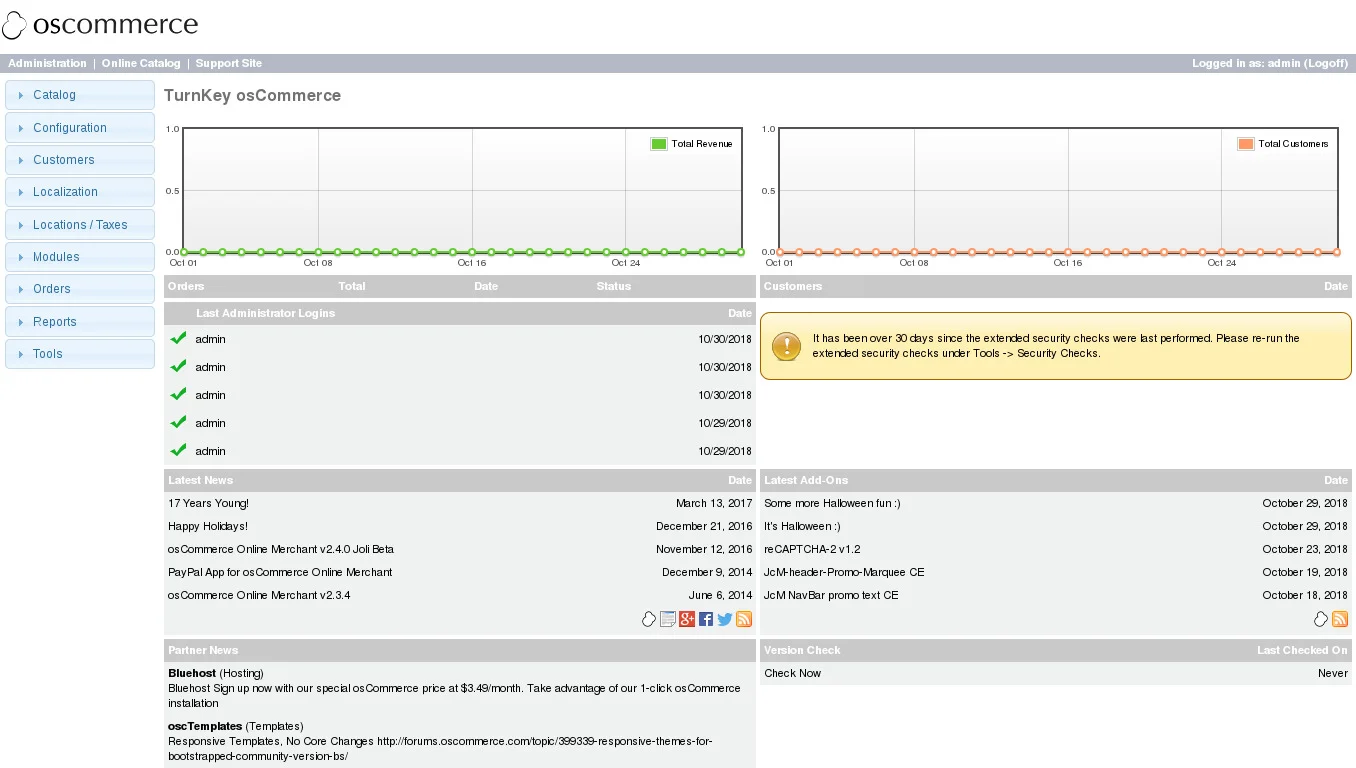
While it may not have the sleek design or modern workflows of newer platforms, it provides everything a beginner needs to launch a basic eCommerce site without being overwhelmed.
In contrast, Magento is a more complex platform that requires a deeper understanding of development and server management. While the backend is powerful and highly configurable, new users often find it challenging to navigate without prior training or technical support. Tasks such as setting up product attributes, customizing themes, and configuring checkout options involve multiple steps and technical considerations.
Additionally, Magento’s advanced architecture means that hosting and installation require a more robust setup, which may add another layer of difficulty for non-developers.
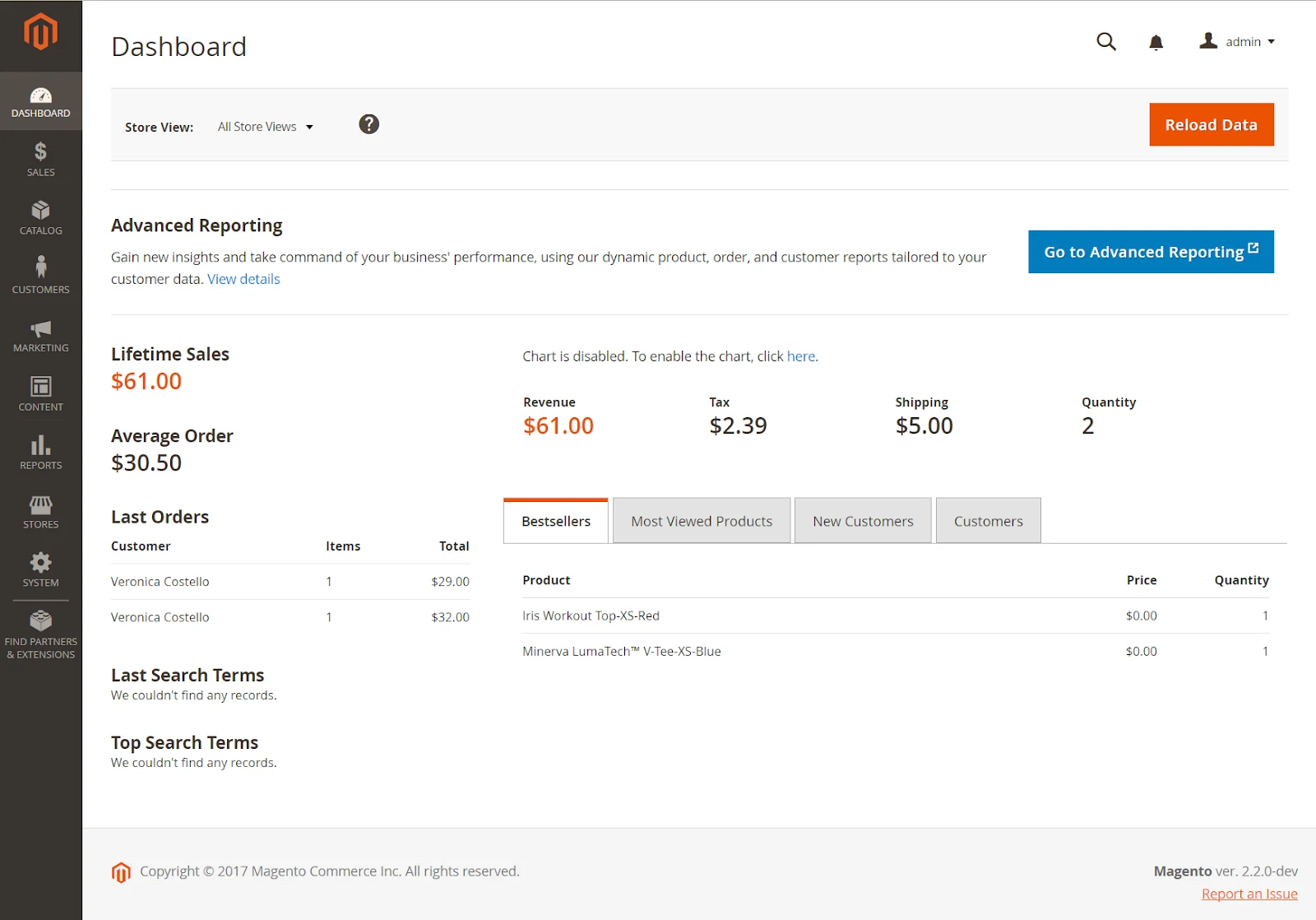
However, it is important to note that Magento's complexity is a byproduct of its flexibility. For businesses with access to developers or technical teams, the learning curve becomes manageable, and the platform’s full potential can be unlocked. Still, for solo entrepreneurs or small business owners trying to set things up on their own, Magento may feel unnecessarily complicated.
Performance and Scalability – Magento is More Scalable
Our verdict:
When it comes to performance and scalability, Magento clearly leads in the osCommerce vs Magento competition. Its modern infrastructure, optimization features, and scalable architecture make it well-equipped to support growth at any level. For businesses aiming for expansion, Magento offers the technical strength to keep pace with both current demands and future growth.
As online businesses grow, so do their technical demands. That’s why performance and scalability are critical when comparing osCommerce vs Magento. While both platforms can power an online store, their ability to handle long-term growth varies greatly.
osCommerce is best suited for small-scale shops with limited product ranges and traffic. Its core system is lightweight, which helps it run reasonably well in simple environments. However, the platform’s older architecture does not naturally support high-performance optimization or advanced scaling. There are no built-in caching tools or database management enhancements, so any improvements must be handled manually or through third-party extensions.
Unfortunately, this often results in slower load times as the store becomes more complex. For merchants looking to expand aggressively, osCommerce can quickly become a bottleneck that requires constant maintenance and workarounds.
Magento, on the other hand, is built for demanding performance needs and flexible scalability. It supports large product catalogs, complex product types, and high-traffic environments without losing speed or reliability. The platform comes with built-in tools like Varnish caching, indexing, and support for modern hosting configurations including CDNs and cloud environments. Magento’s modular architecture also allows it to handle multi-store setups and international expansion, all from a single backend.
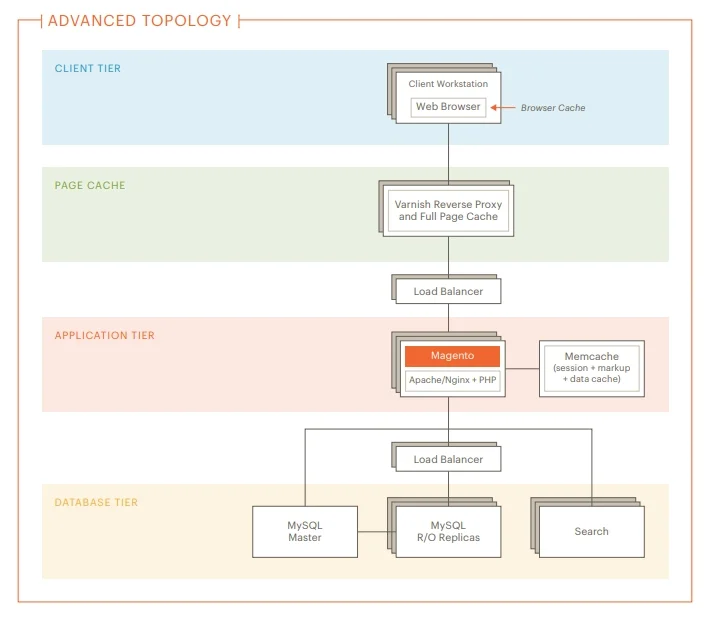
In addition to its native capabilities, Magento benefits from a wide ecosystem of performance-focused hosting providers and developers who specialize in speed optimization. As traffic increases and business needs become more sophisticated, Magento can be scaled up easily without compromising user experience or site stability. This makes it a reliable choice for growing brands that need long-term technical flexibility.
eCommerce Features – Magento Leads with Comprehensive Features
Our verdict:
Between osCommerce vs Magento in terms of built-in functionality, Magento is the clear winner. Its rich set of eCommerce features offers greater flexibility, deeper customization, and more tools for business growth. For merchants who need advanced tools, Magento delivers a much more comprehensive and scalable solution.
When comparing osCommerce vs Magento, it quickly becomes clear that the two platforms are built with different feature sets and priorities. While both allow merchants to list products, process orders, and manage basic operations, the depth and flexibility of those features differ significantly.
osCommerce provides the essential tools needed to run a basic online store. Store owners can manage products, categories, customers, and orders with a relatively simple admin panel. It supports common payment gateways and shipping methods, and additional functionality can be added through community-developed add-ons.
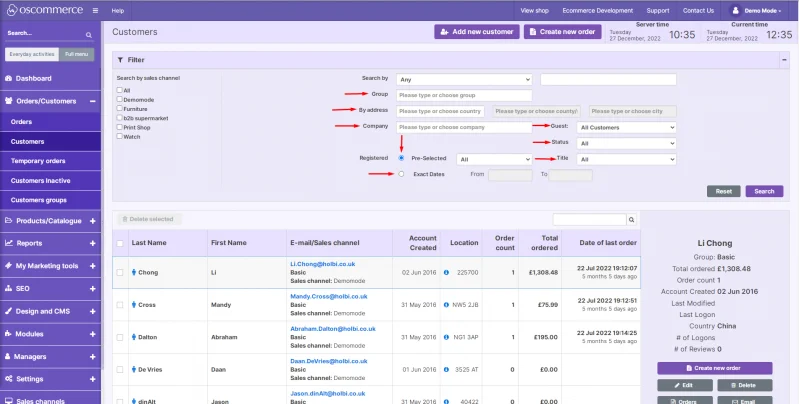
However, many of these features are not built into the core system and must be installed and configured manually. This creates a fragmented experience, where merchants may need to patch together multiple extensions just to perform standard operations like offering discounts, tracking inventory, or handling taxes across different regions.
Magento, by contrast, offers a far more robust feature set right out of the box. It includes advanced product configuration options such as grouped, bundled, and configurable products. Merchants can manage inventory and customer groups, set tiered pricing, create dynamic promotions, and offer personalized shopping experiences. Magento also supports multi-language and multi-currency functionality, making it ideal for international businesses. Beyond that, it allows for flexible tax rules, custom attributes, and integrations with popular ERPs and CRMs.
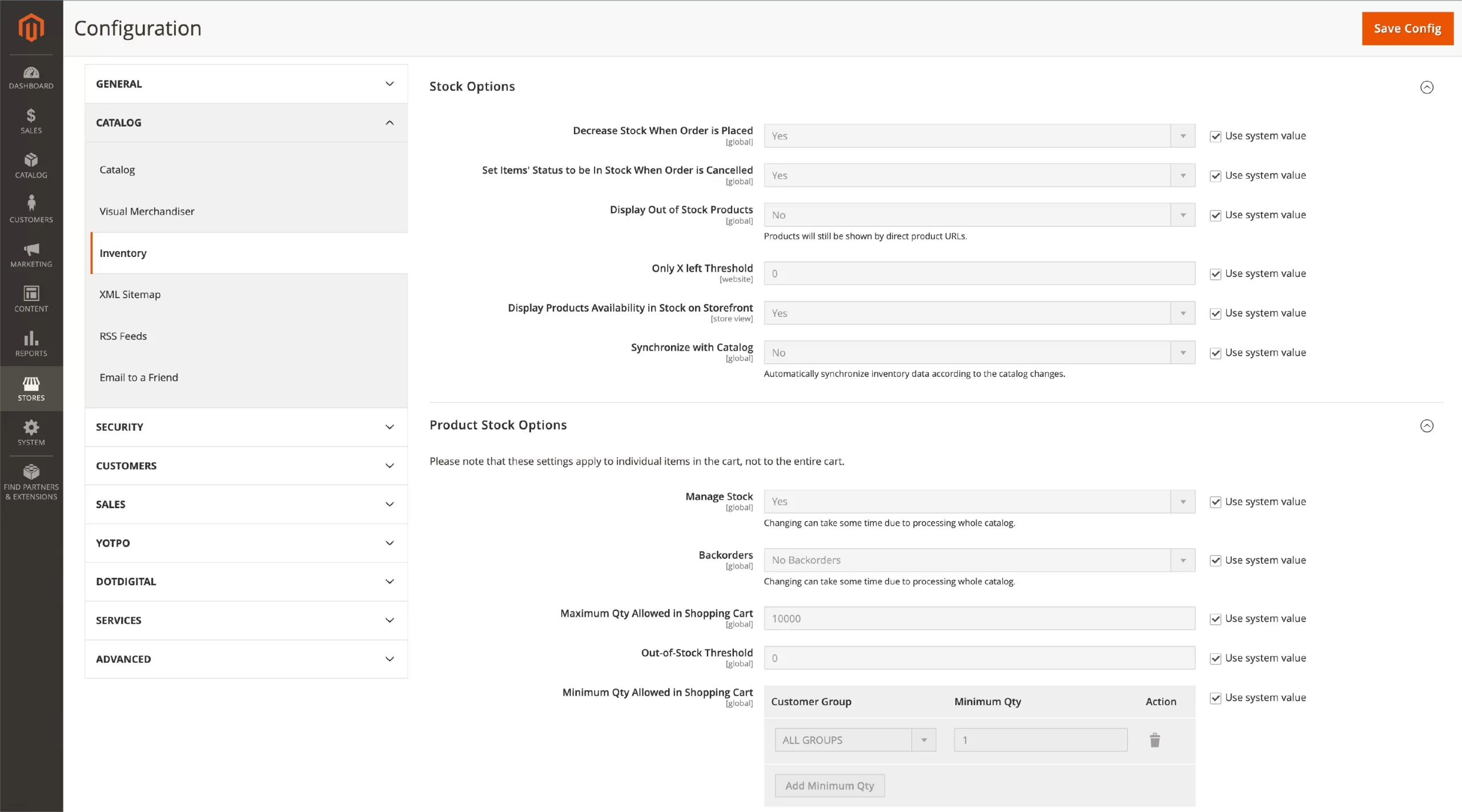
Another area where Magento excels in this osCommerce vs Magento competition is automation. Store owners can schedule promotions, automate inventory updates, and streamline the checkout process with built-in tools. Additionally, Magento’s flexible API support enables seamless integration with external services, such as shipping providers, marketing platforms, and analytics tools. These Magento features are designed to work together in a unified system, which provides more stability, reliability, and control for growing businesses.
Marketing and SEO Functions – Magento Offers Better Features
Our verdict:
When it comes to marketing and SEO, Magento clearly outperforms osCommerce. It provides a professional-grade set of features that help businesses drive traffic, improve search rankings, and increase conversions, all without needing to rely heavily on third-party tools. For serious growth and long-term competitiveness, Magento offers a better foundation.
In the comparison of osCommerce vs Magento, marketing and SEO capabilities are another key area where the two platforms differ greatly. Magento provides a more advanced, built-in toolkit for digital marketing and visibility, while osCommerce offers only basic functions that often require extra setup or extensions.
osCommerce includes some fundamental SEO settings such as manual URL editing and the ability to add meta titles and descriptions for products and categories. However, many other SEO best practices, such as automatic URL rewrites, canonical tags, sitemap generation, or structured data, are not included by default. To gain these features, store owners must rely on third-party add-ons, which can vary in quality and compatibility.
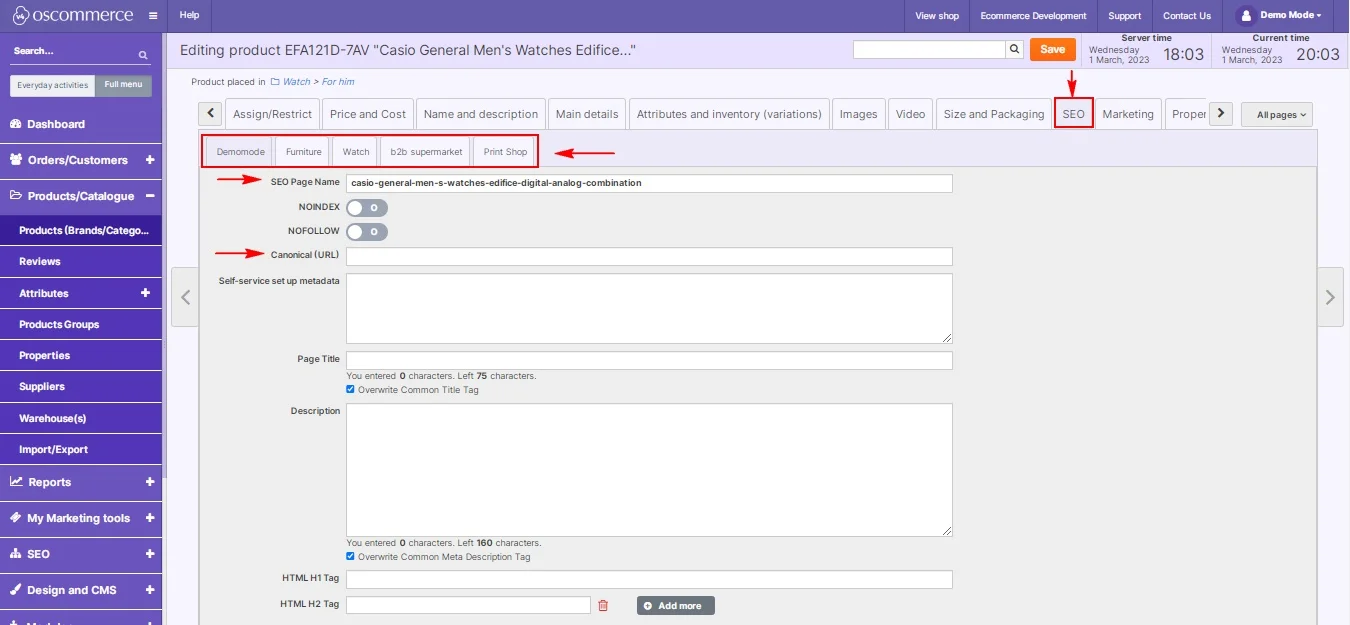
Similarly, marketing functions like coupon creation, email promotions, or cross-selling tools are either limited or must be implemented through community-developed extensions. This piecemeal approach adds complexity and may not offer the consistency needed for sustained growth.
Magento, by contrast, comes with a much broader set of marketing and SEO tools out of the box. Its built-in SEO features include search engine-friendly URLs, customizable meta tags, XML sitemaps, rich snippets, and automatic URL rewrites. These tools help improve a store’s visibility on search engines without requiring extra extensions.
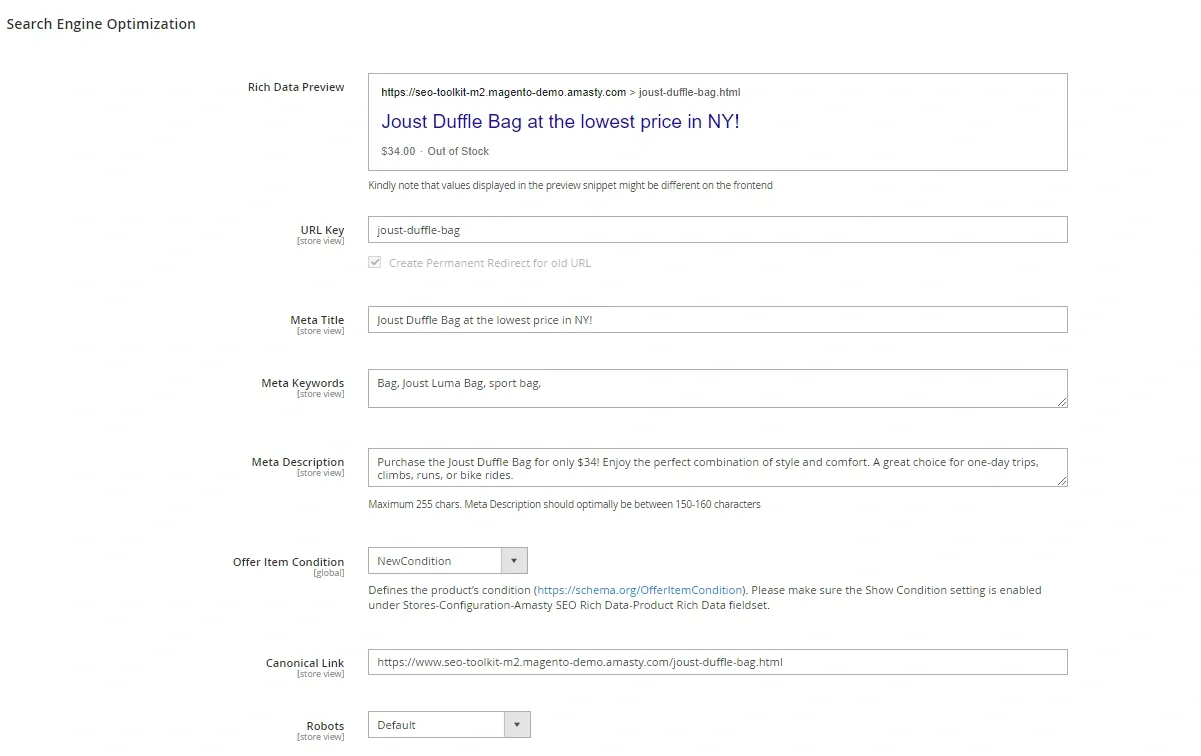
For marketing, Magento offers robust capabilities such as cart price rules, coupon codes, upselling and cross-selling options, customer segmentation, and newsletter integration. Store owners can also schedule promotions and display banners based on customer behavior or shopping history. Additionally, it integrates easily with email marketing tools, advertising platforms, and analytics services, allowing store owners to create and manage campaigns more efficiently.
Themes and Customization – Magento Has Broader Customization Capabilities
Our verdict:
Between osCommerce vs Magento in the area of themes and customization, Magento has a clear advantage. Its modern design system, extensive theme library, and modular architecture make it ideal for merchants who want full control over their store’s look and functionality. For businesses focused on delivering a unique and mobile-friendly shopping experience, Magento provides broader and more future-ready customization capabilities.
Design and customization are central to building a professional and engaging online store. That's why when evaluating osCommerce vs Magento, we cannot ignore this dimension. While osCommerce is quite limited in design flexibility, Magento offers significantly more design functions to help merchants create their brand-driven online presence.
osCommerce offers a basic templating system that allows users to change the layout and design of their storefront. However, it lacks a modern theme framework, and its theme library is relatively small. Most available templates are either outdated or require manual installation and custom coding to modify.
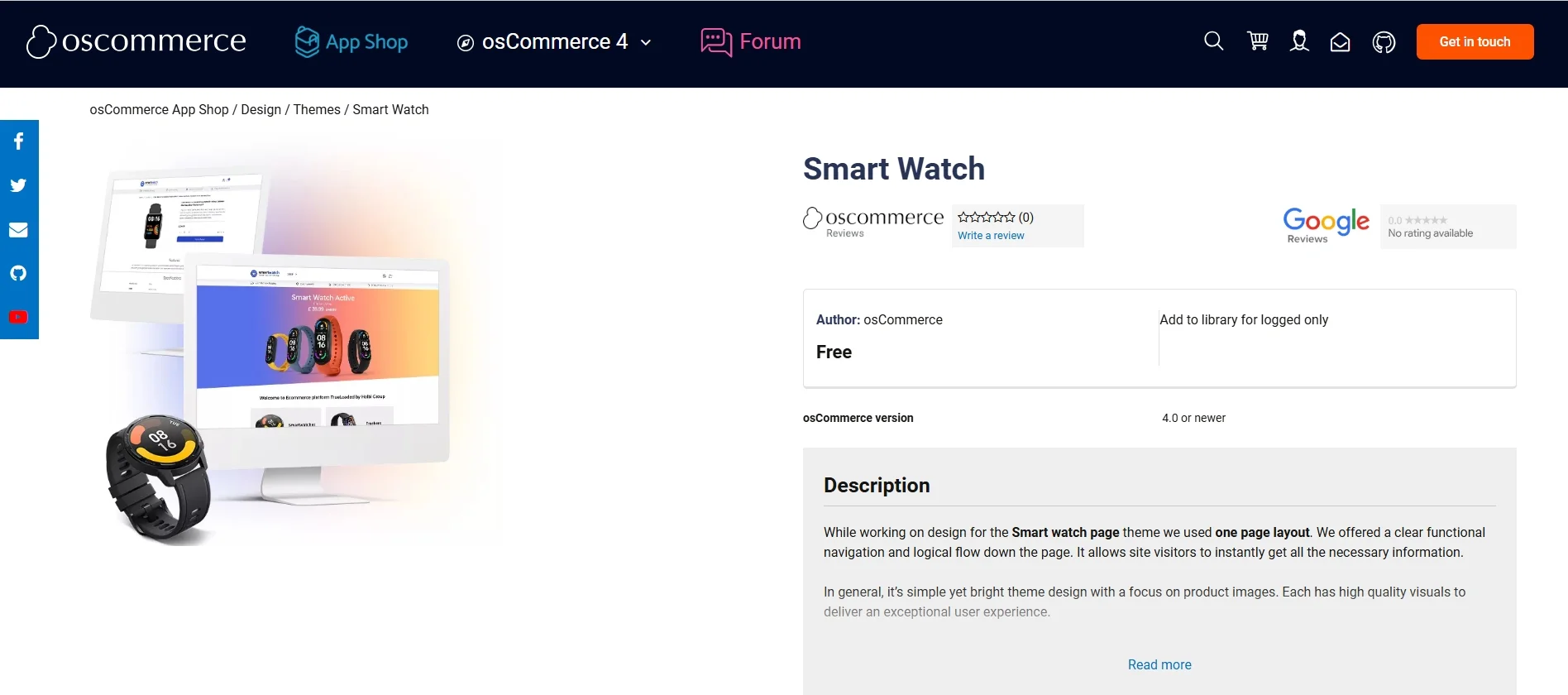
As a result, customizing osCommerce often demands direct changes to core files, which can make future updates difficult and increase the risk of bugs or compatibility issues. This manual approach also makes it harder to achieve a fully responsive, mobile-optimized design without developer involvement.
In contrast, Magento was built with customization in mind. It offers a structured theming system that separates design from functionality, making it easier to manage and update without affecting the core platform. Magento supports responsive themes by default and provides a wide range of design options through its official marketplace and third-party theme providers. Merchants can choose from sleek, modern templates or build fully custom designs tailored to their brand.
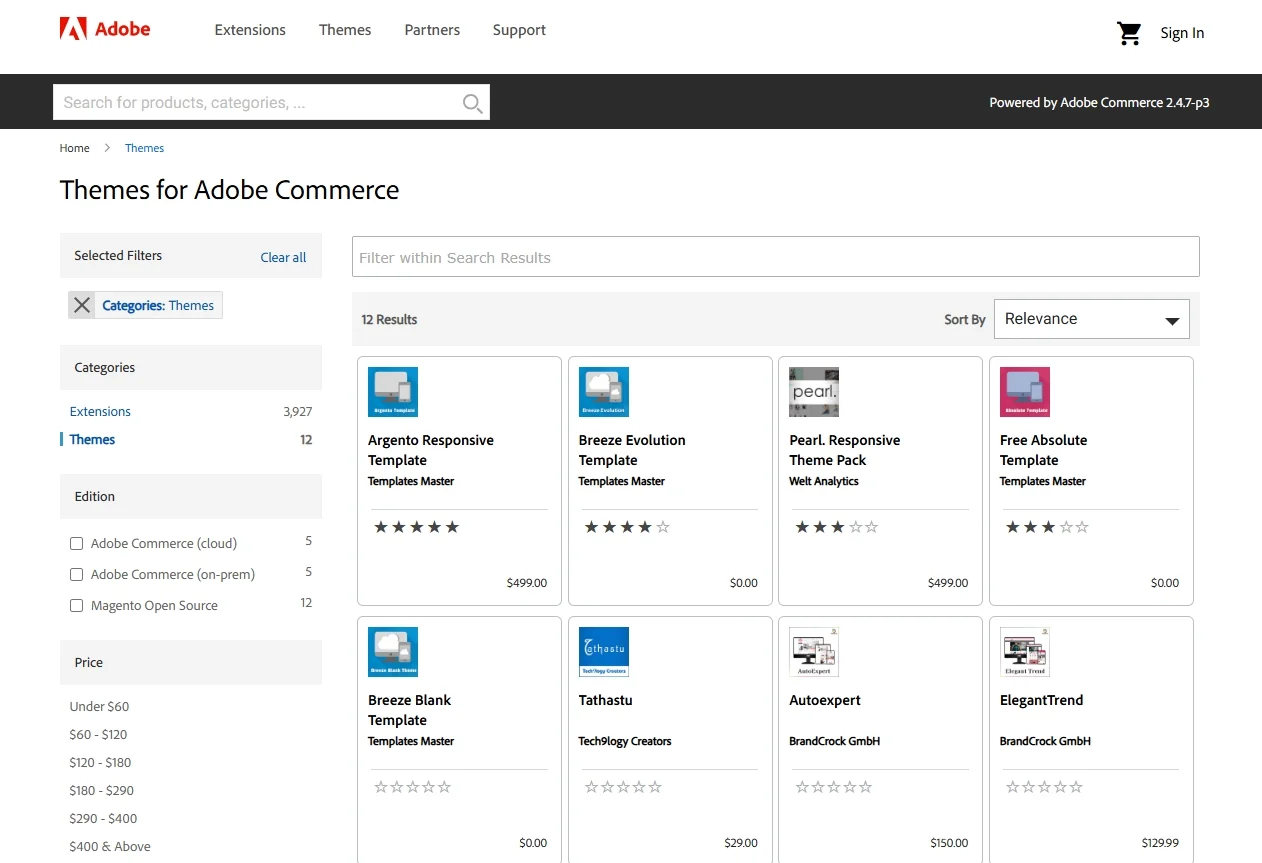
Beyond visual design, Magento’s customization extends to deep functionality. Store owners and developers can adjust product page layouts, add new features, and build custom modules using Magento’s modular architecture. This flexibility makes it possible to tailor every aspect of the customer journey, from homepage banners to checkout processes, without relying on rigid templates.
Extensions and Integrations – Magento Wins for Richer Ecosystem
Our verdict:
In terms of extensions and integrations between osCommerce vs Magento, we believe that Magento is the clear winner. Its professional, developer-backed ecosystem makes it far easier to extend functionality and connect with essential business tools. For businesses that want flexibility, automation, and seamless third-party integration, Magento provides a far richer and more dependable solution.
No eCommerce platform can meet every business need right out of the box. That’s why extensions and integrations are essential; they allow store owners to expand functionality, connect third-party services, and streamline daily operations. In the comparison of osCommerce vs Magento, Magento offers a far more mature and scalable ecosystem of extensions and integrations, while osCommerce tends to be more limited and less consistent in this area.
osCommerce has been around for decades and, as a result, has built up a sizable library of add-ons contributed by its community. These modules cover basic functionalities like new payment methods, shipping options, or minor design enhancements. However, many of these extensions are outdated or not actively maintained, which makes them risky to use, especially on stores that require long-term stability or more advanced capabilities. Installing and integrating them typically involves uploading files and adjusting code, which can be both time-consuming and error-prone for non-technical users.
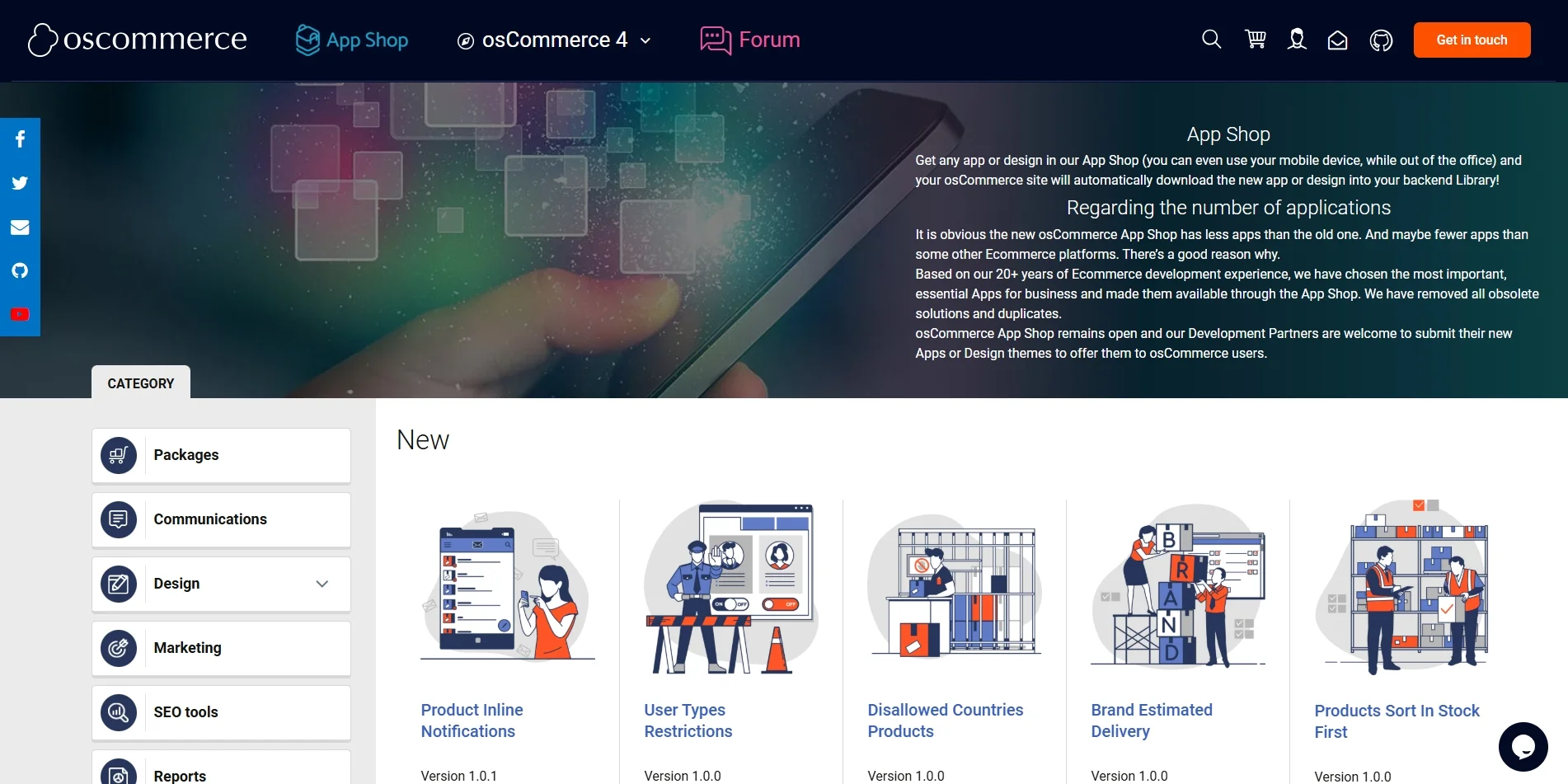
On the other hand, Magento has a robust, professional extension marketplace that is actively curated and supported. Its marketplace includes thousands of high-quality extensions covering nearly every business function, from advanced product filters to AI-powered search and complex tax compliance tools. Many of these extensions are developed by certified Magento partners, which means they follow best practices and are regularly updated.
Another key advantage of Magento is how well its extensions integrate into the platform. Most modules can be installed with minimal effort and configured directly from the admin panel. For growing businesses, this ease of integration is especially important since it reduces development time and ensures that the store can adapt to changing needs without a complete rebuild.
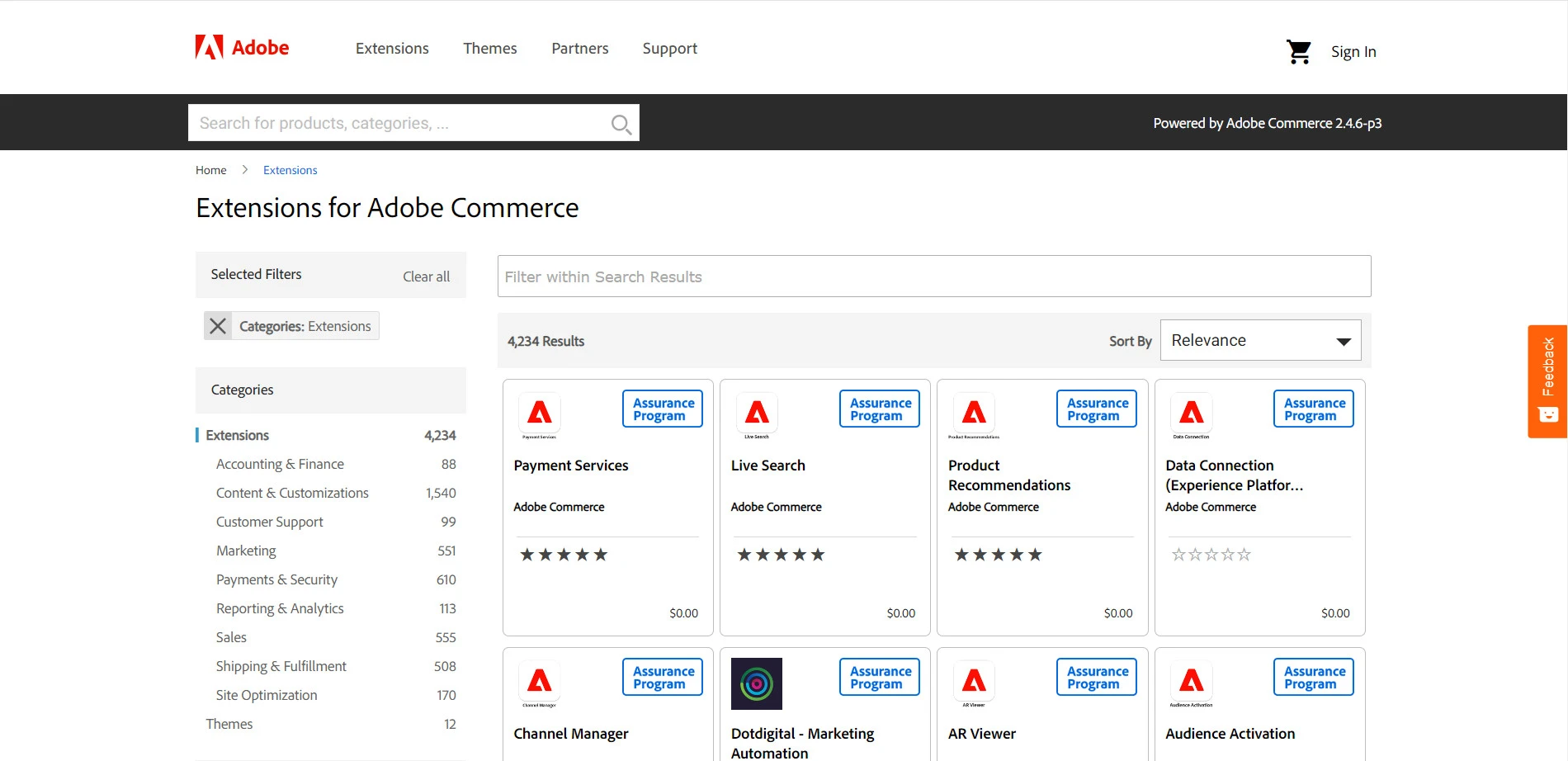
Additionally, Magento provides a modern API architecture, which makes it easier to connect to external platforms such as ERPs, CRMs, POS systems, and marketing automation software. As the business scales, Magento’s ecosystem can support complex workflows, global operations, and multichannel commerce without breaking the foundation of the store.
Security – Magento Provides Strong Security
Our verdict:
In the comparison of osCommerce vs Magento, Magento clearly delivers a more advanced and dependable security foundation. It combines proactive updates, enterprise-grade tools, and expert support to help businesses safeguard their stores and customer data. For store owners who prioritize security and compliance, Magento is a more trustworthy and scalable solution.
When analyzing osCommerce vs Magento from a security perspective, we can conclude that Magento stands out as the more reliable and future-proof option. It offers structured updates, modern security features, and enterprise-grade protection, whereas osCommerce places the responsibility of maintaining security entirely on the user.
osCommerce is a fully open-source platform, which allows for deeper customization but also exposes store owners to higher risks if security isn’t properly managed. There is no centralized process for delivering patches or updates, so merchants must manually monitor for vulnerabilities and apply fixes themselves. For users without technical expertise, securing an osCommerce store can become both difficult and risky.
In contrast, Magento offers a much more robust security framework. Backed by Adobe, Magento receives regular security patches, core updates, and transparent documentation through the Magento Security Center. Built-in features such as two-factor authentication, role-based access control, and encrypted data handling help businesses meet modern security standards. Additionally, Magento makes it easier to achieve PCI compliance, especially when paired with recommended hosting environments that support secure payment processing and customer data protection.
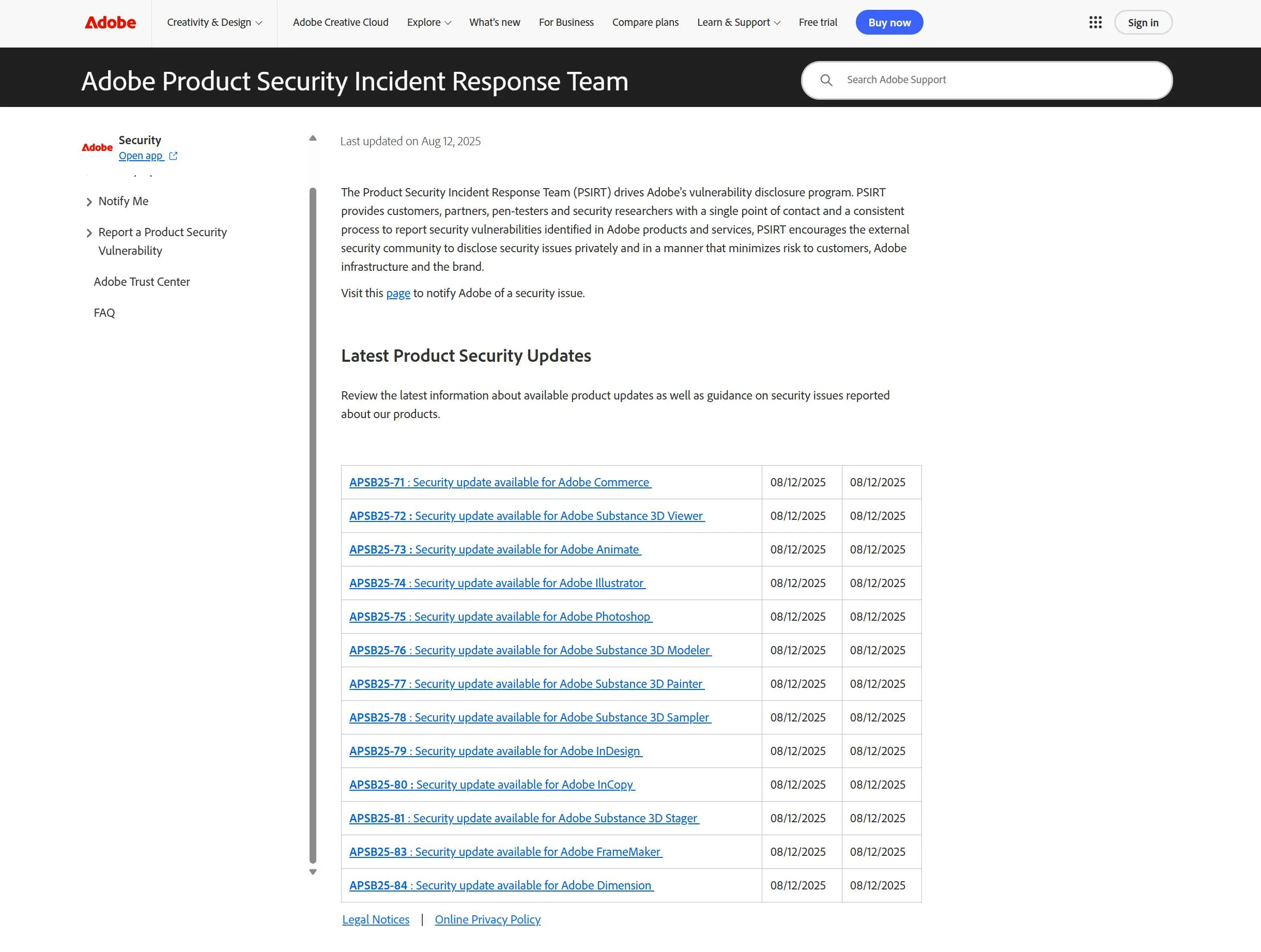
One of the key advantages in the osCommerce vs Magento comparison is that Magento’s security ecosystem is actively maintained and supported by a global community of certified developers. Merchants can rely on professional tools and official guidance, which significantly reduces the chances of oversight or misconfiguration.
Support – Magento Offers Better Support Options
Our verdict:
When comparing osCommerce vs Magento in terms of support, Magento clearly comes out ahead. Its combination of official backing, certified experts, and extensive resources gives businesses peace of mind and access to reliable help when it matters most. For merchants that value responsive, high-quality support, Magento offers a far more professional and dependable experience.
Lastly, on our comparison of osCommerce vs Magento, let's take a look at how they support users. While both are open-source solutions, Magento provides a more structured and professional support ecosystem, making it the stronger option for businesses that require ongoing technical assistance and long-term reliability.
osCommerce relies entirely on community support. Store owners can access forums, user guides, and a library of community-generated content to find help when problems occur. While the osCommerce community has been active for many years, the lack of official support channels means that users must depend on peer advice or hire third-party developers. For non-technical users or businesses with time-sensitive operations, this can present a significant challenge.

Magento, in contrast, offers a much broader range of support options. Help is available through detailed documentation, a large and active community, and certified Magento developers worldwide. Another key strength of Magento is its ecosystem of specialized agencies, partners, and developers. Because of its popularity and professional focus, Magento support is not only easier to find but also more standardized in terms of quality and expertise. This network allows businesses to outsource complex development or troubleshooting tasks with confidence.
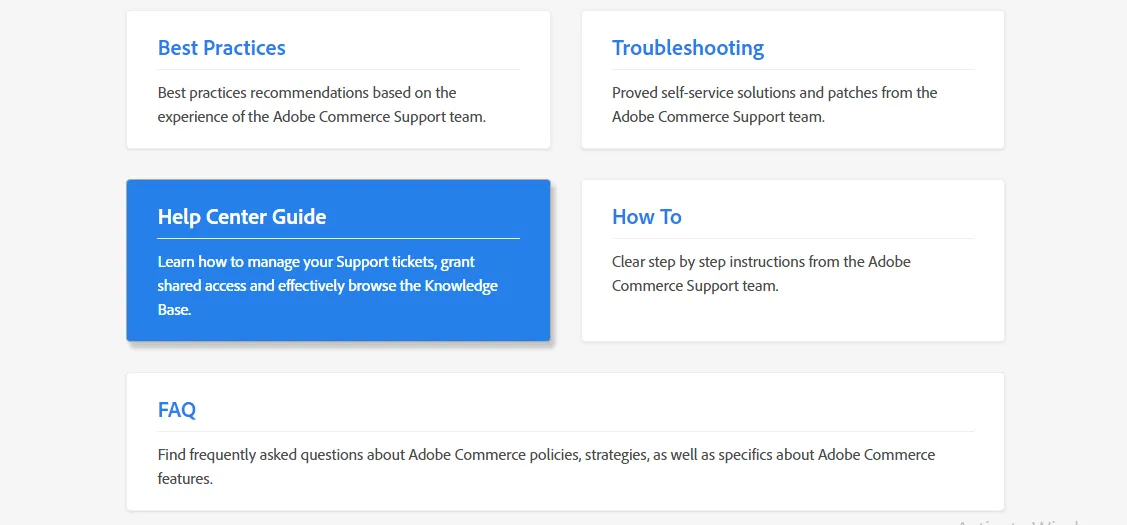
In the osCommerce vs Magento discussion, it's also important to consider long-term viability. Magento’s ongoing investment from Adobe ensures that support resources, documentation, and training materials continue to improve. Meanwhile, osCommerce has seen less consistent updates and fewer new contributors over the years, which can limit access to fresh support content or up-to-date solutions.
Bonus Reading: Migrating from osCommerce to Magento
We must say that in the osCommerce vs Magento comparison, many merchants eventually find that Magento’s flexibility, advanced features, and long-term scalability better align with their evolving goals. Therefore, if you’ve started with osCommerce but are now facing limitations in performance, design, or integration capabilities, moving to a more modern solution like Magento could be the right next step.
Migrating from osCommerce to Magento might sound complex, especially if your store contains a large amount of data, including products, customers, orders, and reviews. However, with the right tools and guidance, the process can be smooth and secure. This is where LitExtension comes in, a trusted migration service that specializes in transferring data between eCommerce platforms safely and efficiently.

LitExtension supports full migration from osCommerce to Magento, ensuring that all critical store data, such as products, customers, and orders, is preserved accurately during the transition. On top of that, during the migration process with LitExtension, you can keep your store up and running as usual, so there is no downtime to your site. Whether you’re a small business or a growing enterprise, we can help you to upgrade your store without losing what you’ve already built.
If you’re ready to move forward or want to explore the benefits of switching platforms, we recommend checking out our osCommerce to Magento migration for a confident and informed transition.
Seamlessly migrate your store to a more robust place!
LitExtension can safely transfer your data to unlock more growth on the new platform.

Our Methodology to Test osCommerce vs Magento
To ensure this osCommerce vs Magento comparison is accurate, balanced, and practical for real-world users, we followed a structured, multi-step research process. Each step was designed to evaluate the platforms from both a technical and business perspective.
Step 1. Platform documentation review
We began by analyzing the official documentation, feature lists, and system requirements for both osCommerce and Magento. This helped us understand each platform’s core capabilities, intended use cases, and the technical foundation they are built upon.
Step 2. Community and user feedback
Next, we reviewed discussions from developer forums, merchant communities, and third-party reviews. This allowed us to identify common pain points, success stories, and real-world experiences that go beyond marketing claims.
Step 3. Hands-on testing
To gain firsthand insight, we set up demo stores using both platforms. This included going through the installation process, configuring product catalogs, testing admin features, and exploring customization tools. This step helped us directly compare usability, performance, and overall workflow.
Step 4. Cost analysis
We researched actual pricing data from hosting providers, development agencies, and extension marketplaces. This allowed us to estimate the total cost of ownership for each platform, including potential hidden expenses like paid modules, developer time, and server requirements.
By following these five steps, we ensured that the osCommerce vs Magento comparison reflects current realities, technical depth, and business priorities. Our goal is to help you make an informed, confident decision based on your store’s goals, resources, and future plans.
osCommerce vs Magento – FAQs
Is osCommerce any good?
osCommerce can still be a decent option for small businesses or developers who want full control over their store’s code and don’t mind managing everything manually. It’s lightweight, open-source, and free to use. However, its technology stack is quite outdated, and it lacks many modern eCommerce features out of the box.
While it may still work for simple stores, it’s generally not recommended for long-term growth or larger operations.
Who are Magento competitors?
Magento faces competition from several other eCommerce platforms, each catering to different business needs. Key competitors include:
- Shopify: Known for its ease of use and hosted environment
- BigCommerce: Offers enterprise-grade features in a SaaS model
- WooCommerce: Ideal for WordPress users seeking flexibility
- Salesforce Commerce Cloud: Designed for large enterprises
What is Magento called now?
Magento is still widely known by its original name, but since Adobe acquired the platform in 2018, it is now Adobe Commerce.
Final Thoughts
To conclude, osCommerce may appeal to small business owners or developers looking for a lightweight, low-cost solution with full code access. However, its outdated architecture, limited features, and reliance on manual updates make it less suitable for modern, growth-oriented stores.
Magento, on the other hand, offers a far more powerful and scalable solution. With its rich feature set, strong security tools, advanced customization capabilities, and active ecosystem, Magento is built for businesses that plan to expand, optimize, and innovate. While it requires more resources and technical expertise to run, the long-term value and performance it delivers can more than justify the investment.
In this osCommerce vs Magento comparison, it’s clear that both platforms serve different types of users and business needs. Therefore, the final decision heavily depends on your requirements and business size. Lastly, to learn more about platform migrations, performance optimization, and eCommerce strategy, be sure to explore additional resources on the LitExtension blog.

